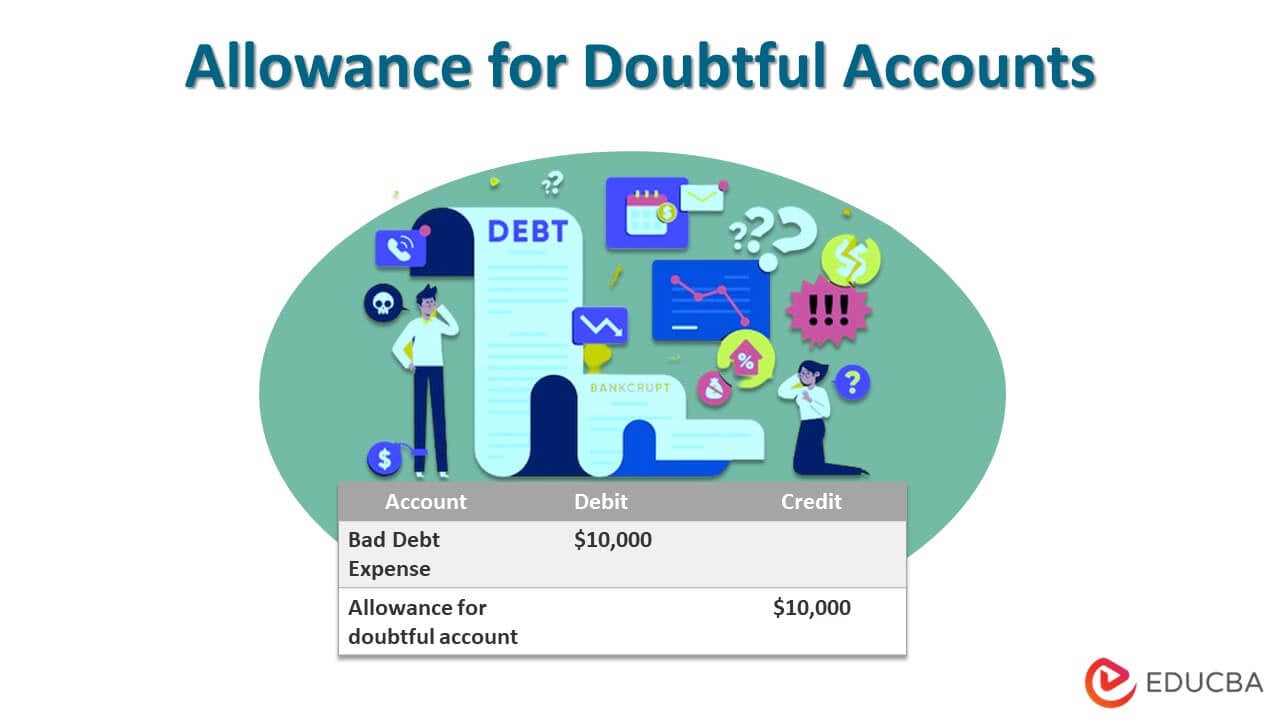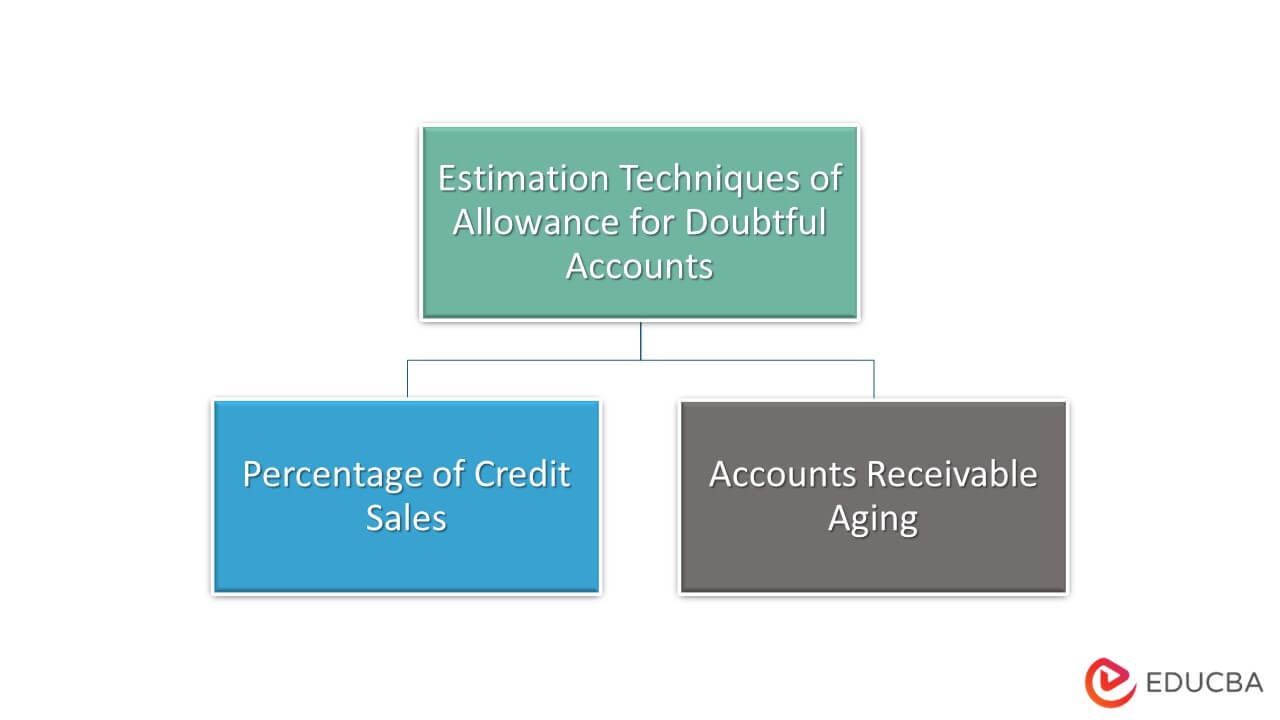Updated July 17, 2023

Definition of Allowance for Doubtful Accounts
An allowance for doubtful accounts is a contra entry that is passed in the accounting field to net off the total amount of receivables that are present on the balance sheet to show only the specific amounts which are to pay as expected and thus allowance of doubtful accounts is just estimation of the number of receivables which the business expects cannot be collected.
This can be described as an estimation of the number of account receivables out of the total receivables that the business expects cannot be collected. This is typically a contra asset account that shows the amount of money/receivables expected to be uncollectible. This is created during the sale period and acts as an offset to nullify the impact of bad debt expenses. Two prevalent methods to determine the uncollectible accounts are the percentage sales method and the accounts receivables aging method.
Purpose of Allowance for Doubtful Accounts
The purpose is to prepare the business for bad debts and get a realistic picture of the percentage of accounts receivables out of the entire receivables. Every company or industry will have customers who purchase items on a credit basis, and thus a certain amount will be owed. Therefore, this amount owed is reported in the balance sheet as account receivables. The sole purpose of creating an allowance for doubtful accounts is to estimate how many customers will fail to make payments towards the amount they owe. This is more of a proactive approach taken by companies instead of waiting to see how the payment methodology is working out, where the business will pass a debit entry for the bad debt expense and similarly make a credit entry as the allowance for doubtful accounts.
Example
Let us take an example where a company has a debit balance of account receivables on its balance sheet to an amount of $500,000. The business expects that not all customers will be able to pay 100% of the amount and estimates that $100,000 will not be converted into cash. Thus the allowance for doubtful accounts for the period ending starting that month will be zero in the beginning. Now, to account for the $100,000 that will not be converted into cash, the business has to pass a journal entry like debiting the bad debt expense by $100,000 and crediting the allowance for a doubtful account by the same value. When this accounting entry is passed, the total account receivable on the balance sheet will be $400,000 and is known as the net realizable value of accounts receivables.
Estimation Techniques of Allowance for Doubtful Accounts
There are generally two methods of estimating the allowance of doubtful accounts required, which are as follows, and a brief description of each one of them is given:
- Percentage of Credit Sales: This is more of a benchmark standard that is followed where the industry parameters are compared and considered. Suppose a company and the industry have reports that on a long run average basis, it is seen that generally, three percent of the sales are not collectible; the company will also record this as 3% of each period sales made in on a credit basis as a debit entry to the bad debt expense and a credit entry to the allowance for doubtful accounts.
- Accounts Receivable Aging: This is the second type of estimation technique that segregates the customers who have not paid based on the dates of sales made or the invoice date range, and a default rate is applied to each date range. So the percentage of rate of default increase as the date rage increases. Finally, each payment falling under a specific date range is multiplied by the default rate, and the final amount is considered the allowance required for doubtful accounts.
Journal Entry for Allowance for Doubtful Accounts
The journal entry goes as follows: a debit entry is made against the bad debt expense, and a credit entry is passed as an allowance for doubtful accounts. Suppose the business has a total of $100,000 as accounts receivables, and the company estimates that $10,000 will go as uncollectible, so this $10,000 they need to account for as the allowance for doubtful accounts and pass the below entry:
| Account | Debit | Credit |
| Bad Debt Expense | $10,000 | |
| Allowance for doubtful account | $10,000 |
Allowance for Doubtful Accounts on Balance Sheet
The doubtful account is considered an asset on the balance sheet. The accounts are shown in the balance sheet in the asset section itself, just below the accounts receivables line item. Doubtful accounts are generally considered contra accounts, meaning they will have either zero or credit balances. Any amount added to the allowance for a questionable account will always represent an amount for the deduction. Recording any amount here means that the business can easily see the extent of bad debt expected by the industry and how much it is creating an offset to the total accounts receivables of the company.
Direct Write-Off Method vs Allowance for Doubtful Accounts
The direct write-off method is when the bad debt is directly charged to the expense line as soon as the business realizes that a particular invoice will not be paid. In contrast, allowance for doubtful accounts is a method of estimation done on a prior basis as soon as the sale is made. Thus, bad debt recognition takes place at a delayed stage in the direct write-off method, whereas the recognition is immediate in the case of the allowance method. Thus, the direct write-off method leads to higher initial profit than the allowance method. The amount of bad debt expense is known in the direct write-off method, whereas the allowance method is more like an amount estimation. The total receivables line in the balance sheet is generally of lower value under the allowance method since a reserve is getting offset against the receivable amount.
Conclusion
As discussed above, we could see how to estimate the allowance for doubtful accounts and how it prepared the business to face the problem of uncollectible accounts and design it accordingly. This is more of a forecasting method that organizes the company to account for the bad debt expenses, which is common in every business.
Recommended Articles
This is a guide to Allowance for Doubtful Accounts. Here we also discuss the definition and purpose along with the journal entry. You may also have a look at the following articles to learn more –


